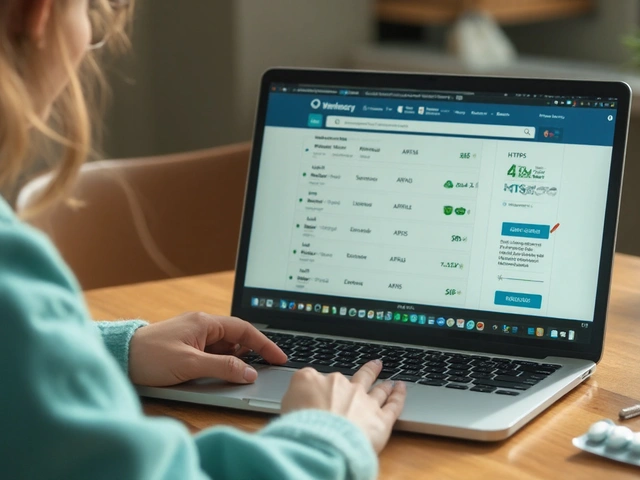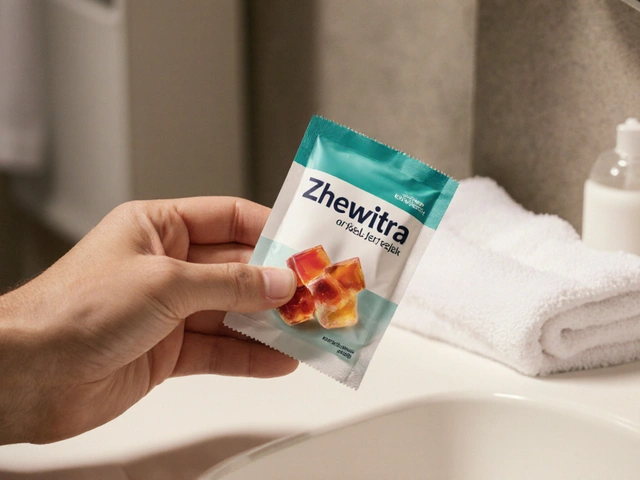
Ever wondered if managing diabetes could get a little simpler? Lantus, a long-acting insulin, has been a game-changer for millions of people dealing with both type 1 and type 2 diabetes. The idea of only needing one shot a day to keep blood sugar in check—yeah, that gets people’s attention. But what’s the real story behind this insulin? Is it as smooth as it sounds? Let’s get into what Lantus actually does, who uses it, and why it’s become such a big deal in diabetes care.
What is Lantus and How Does It Work?
Lantus is the brand name for insulin glargine, a synthetic form of human insulin that’s designed to act slowly and steadily over time. Unlike rapid-acting insulins that kick in fast to cover meals, or NPH that peaks and crashes, Lantus is all about that smooth, steady release. Think of it as background music—always playing, never too loud or too quiet. When you inject it under your skin, tiny crystals form and dissolve bit by bit, giving you 24 hours of low-key insulin power. That’s a massive relief for anyone tired of unpredictable spikes and drops in blood sugar.
Doctors usually recommend Lantus for folks who need a ‘basal’ insulin—meaning something to keep their blood sugar stable between meals and at night. That could be kids struggling with type 1 diabetes, or adults whose type 2 has gotten too stubborn for just pills and diets. The instructions usually say take it once a day, at the same time every day. Some tweak the timing based on their schedule, but most stick with evenings since it fits bedtime routines. It’s important to mention: you can’t mix Lantus with other insulins or solutions in the same syringe because it’ll mess up its slow-release magic.
You might wonder—how reliable is this 24-hour thing? Research from as far back as 2001 shows Lantus maintains a steady level in the blood for about 20-24 hours in most adults, with barely any “peak.” That’s why people experience fewer low blood sugar episodes compared to insulins that have a pronounced peak. Here’s a quick rundown from real-world clinical trial data:
| Insulin Type | Time to Peak Action | Duration | Hypoglycemia Episodes (per year) |
|---|---|---|---|
| Lantus | None / Flat | ~24 hours | ~24 |
| NPH | 4-12 hours | 12-18 hours | ~31 |
That “none/flat” peak for Lantus means fewer surprises at night and first thing in the morning—a big plus for anyone worried about dipping too low while sleeping or fasting.
Benefits of Using Lantus for Diabetes Management
Why does Lantus matter so much in the world of diabetes care? For starters, it’s a huge stress-buster for people tired of frequent injections and unpredictable blood sugar swings. You get just one injection—usually into your thigh, belly, or upper arm—and it quietly works behind the scenes. No constant thinking about timing meals to dodge insulin peaks. It’s not about being lazy; it’s about convenience and safety.
There’s more. Research over two decades keeps confirming that Lantus cuts down the risk of severe hypoglycemia, especially in people with type 1 diabetes who are constantly balancing insulin needs. Since low blood sugar can sneak up on you in the middle of the night, having Lantus quietly doing its job means better sleep and fewer scary wake-ups.
Lantus is also a blessing for people who have busy lives. Missed a meal? Had a stressful day? The risks of big highs and lows go down with Lantus. People using it often report better energy because they’re not riding that blood sugar roller coaster all day. And when it comes to kids and teens who want a life outside of their diagnosis, fewer injections and less daily drama are huge advantages.
Doctors also like Lantus because it’s flexible. It fits into combination therapy—add it to other insulins, oral medications, or diet programs without blowing up the whole program. It also works for both new diabetes patients and those with years of experience.
A fun fact—Lantus was approved by the FDA in April 2000 and quickly shot up to become one of the world’s most-prescribed basal insulins. By 2023, nearly 20 million people worldwide had tried it at some point. That’s a ton of experience for both patients and healthcare teams.

Potential Side Effects and Risks of Lantus
No sugar-coating here (pun intended): even wonder drugs have their downsides. Lantus is built to be safe and predictable, but a few things can mess with your day.
Top of the list is hypoglycemia. Just because Lantus is steady doesn’t mean you’re set for life. Skip a meal, work out extra hard, or misjudge your dose, and your blood sugar can still tank. Symptoms like sweating, shaky hands, confusion, or, in worst cases, passing out, need fast attention. Always keep candy or glucose tabs on hand, no matter how steady you feel.
Another thing people sometimes see is mild pain or redness where they give the shot. Rotate your injection sites every day; it helps keep your skin healthy and comfortable. Some people, especially at first, can gain a bit of weight after starting Lantus. This isn’t unique—it happens with all insulins as your body shifts back into better sugar control.
What about long-term risks? The big debate since Lantus was introduced—does it raise the risk of cancer? Early animal studies hinted at this because certain cell lines grew faster when exposed to insulin glargine. But let’s not get ahead of ourselves. Large studies over the last decade, including the ORIGIN trial (over 12,500 patients followed for seven years), found no real spike in cancer rates with Lantus. Still, if you have a history of certain cancers, mention it to your doctor.
Insulin allergies are rare, but they happen. Signs like persistent itching, swelling, or trouble breathing mean you need to talk to your doctor fast. Most people never see this, but it’s good to know.
Tips for Injecting and Living with Lantus
Getting the hang of life with Lantus comes down to routine and a handful of simple tricks. The best time for your shot is whenever you can remember, every single day. That means tie it to something you never forget—like brushing your teeth at night. Set phone reminders if your schedule is wild.
Rotate injection sites. Don’t keep poking the same spot, or your skin gets hard and insulin stops working right there. Thighs, stomach (a few inches away from your belly button), or upper arms—they all work. Just mix it up, and avoid scars or tattoos.
Never store Lantus in the freezer, and don’t let it get too warm. Unopened pens and vials belong in the fridge, but once in use, they’re good for 28 days at room temperature (below 86°F/30°C). Past that, they lose strength—so mark your calendar.
- Use a new needle each time. Old needles get bent and grime builds up—not worth the risk.
- If you miss a dose, don’t ‘double up.’ Take it as soon as you remember, unless it’s close to the timing of your next shot. Then just wait it out.
- Carry medical ID. It tells others you’re on insulin, in case of accidents—your phone’s lock screen, a bracelet, whatever works.
Watch your blood sugar, especially when starting or adjusting your dose. Everyone responds a bit differently. Record your numbers and share them during doctor visits—this is gold for figuring out what’s working for you.
Think about meal routines, too. Lantus covers background needs, but if your blood sugar still spikes after eating, your doctor might add rapid-acting insulin or suggest diet tweaks.

Frequently Asked Questions and Common Myths About Lantus
There’s a bunch of stuff floating around about Lantus that’s just not true. First off, some people worry: "If I take insulin, I’ve failed at managing my diabetes." That’s just wrong. Diabetes changes—your pancreas gets tired, your body’s needs shift with age, and sometimes insulin is just the next sensible step. Lantus can help people get back to feeling normal, not be a sign of things going wrong.
Another myth: “More Lantus means better control.” Not really. Too much can make blood sugar dive, while too little leaves you running high. Only adjust your dose with your doctor’s advice. Testing more often (especially when you’re sick or eating differently) helps spot trends and avoid disasters.
Some think you can’t travel when on insulin. Lantus is pretty sturdy. Just keep pens or vials in a cool bag, pack supplies in your carry-on, and carry a note from your doctor if you’re flying—security agents have seen it all.
Finally, about cost: Lantus isn’t cheap. As of June 2025, a single pen can cost $60-$80 without insurance, depending on the pharmacy. But most insurance plans cover it to some extent, and patient assistance is actually pretty decent—worth checking Sanofi’s website for current offers. Biosimilar versions (like Basaglar or Semglee) can save you cash and work just as well, according to FDA reviews and head-to-head trials.
If you’re new to Lantus, maybe nervous about insulin, talk to someone who’s lived with it—a family member, a friend, or even an online group. Personal stories often trump dry advice. Managing diabetes isn’t about perfection; it’s about finding a rhythm that fits your life and leaves you free to focus on other things.
Christine Watson
This article provides a really clear overview of Lantus and its benefits for managing diabetes. I appreciate how it breaks down the workings of insulin glargine in a way that's easy to understand without being too technical.
One of the things I like most is the focus on practical tips and everyday advice. Managing type 1 or type 2 diabetes can be so overwhelming, so having real-world strategies helps a lot.
It’s important to remember that while Lantus can be very effective, it also has risks and side effects that need monitoring. I’m glad the article highlighted those responsibilities.
Overall, this is a great resource for anyone newly diagnosed or even those who've been managing diabetes for a while and want to learn about long-acting insulins in detail.
Does anyone here have personal experience with Lantus that they'd like to share? How did you find adjusting to it day to day?
Macy Weaver
Thanks for sharing this informative post! I’m curious about the pros and cons part because managing diabetes can feel like balancing so many factors all at once.
Like, aside from the typical risk of hypoglycemia, are there any less obvious pitfalls to using Lantus that people might overlook? I’ve heard some mention issues with injection site reactions or lower effectiveness over time.
Also, the tips for everyday use caught my attention. I wonder what kind of lifestyle adjustments others had to make when starting Lantus – especially around meal timings and exercise.
It’d be great if more people could chime in with personal insights, especially those who have switched from other insulin types.
James McCracken
While this article paints a very rosy picture of Lantus, I can’t help but wonder if we’re giving too much credit to pharmaceutical solutions in general.
The whole idea of relying on a man-made hormone for daily survival is fascinating but also a bit unnerving. Isn’t this just another patch on a fundamentally broken metabolic system?
Sure, it helps regulate blood sugar, but does it address the root causes of diabetes? Or are we simply becoming slaves to these long-acting injections indefinitely?
Also, I question if the benefits slightly outweigh the risks, or if this is just a way to sugarcoat a complicated medical dependency.
Evelyn XCII
Oh great, another insulin article. Just what every diabetic wants to read after a day full of complicated doctor speak and endless jabs.
Honestly though, if you want something useful, I'd appreciate some real talk on how annoying the whole process can be. Like, managing the daily injections, the tracking, and the side effects. Because let’s be real, it’s not always this sunshine and rainbows thing the healthcare pamphlets want us to believe.
Anyone else tired of hearing about the benefits while having to deal with the needle every single day?
Nina Vera
This is so important! Managing diabetes is seriously a full-time job and knowing all about Lantus helps people take charge.
I think having those real-world tips is what separates useful info from just textbook stuff.
Like, I didn't realize how crucial timing and consistency are when it comes to Lantus. It's almost dramatic how one missed dose can throw everything off.
Has anyone here had a near disaster moment that they managed to turn around? Stories like that really help others feel less alone.
Daniel Buchanan
The article covers the basics well, but I wish it went a bit deeper into how Lantus is integrated with other diabetes medications.
For example, does anyone know how it interacts with newer oral agents or how to fine-tune dosages when combining treatments?
Also, what about the long-term effects? I've been trying to figure out if extended use over many years poses risks beyond the usual concerns.
I’m fascinated by the pharmacokinetics behind insulin glargine but feel like that's a rabbit hole most aren’t ready for outside of academic settings.
Lena Williams
I just want to add that adjusting to Lantus at first was kinda tough for me. The timing of doses felt like it was taking over my life, and I kept forgetting if I took it or not.
It took a bit before I developed a routine that worked. Now with alarms and a journal, it’s much smoother, but those early days were stressful.
I also had a few minor side effects like swelling at the injection site, which the article doesn’t dive deeply into.
Regardless, I agree it’s a major help in managing my blood sugar more evenly throughout the day.
Sierra Bagstad
From a scientific standpoint, insulin glargine represents a significant advancement in endocrinology. Its long-acting nature provides a steady release of insulin, reducing the spikes and troughs seen with other insulins.
However, it is imperative that patients receive clear instructions on administration technique to avoid lipodystrophy or other injection site complications. Such nuances are sometimes overlooked in popular articles.
Moreover, monitoring for potential hypoglycemia remains crucial, particularly in the elderly or those with renal impairment.
The article provides a solid overview but should emphasize the importance of individualized patient education and follow-up.
Kemari Nielson
It's worth highlighting that Lantus, while effective, is not a one-size-fits-all solution for diabetes management.
Different patients respond differently to long-acting insulin, and dosage adjustments must be guided carefully by healthcare professionals.
Patient adherence, understanding of side effects, and lifestyle factors play a significant role in treatment success.
I'd advise anyone interested to maintain consistent communication with their care team and report any concerns promptly.
Steve Helsel
Honestly, does anyone else feel the amount of info about Lantus is just overwhelming? I mean, sure, it helps control blood sugar but the whole process including dealing with risks, side effects, daily injections, and timing feels like a full-time job.
I'm always tempted to just throw in the towel when it gets too much, but I guess this is just part of the life we signed up for.
Anyone else battle this mental fatigue with diabetes management?
Steve Moody
While many applaud Lantus for its steady glucose regulation, it’s important to dissect the nuances with a critical eye.
The pharmacodynamics of insulin glargine offer unprecedented basal coverage, yet the literary portrayal often lacks the analytic rigor to discuss its limitations fully.
For instance, the assertion of "real-world advice" needs substantiation through longitudinal data to affirm efficacy beyond anecdotal evidence.
Moreover, while the article touches on risks, further elaboration on immunogenicity and potential antibody formation would benefit discerning readers.
In sum, this write-up is a decent primer but falls short of comprehensive scholarly critique.






Write a comment